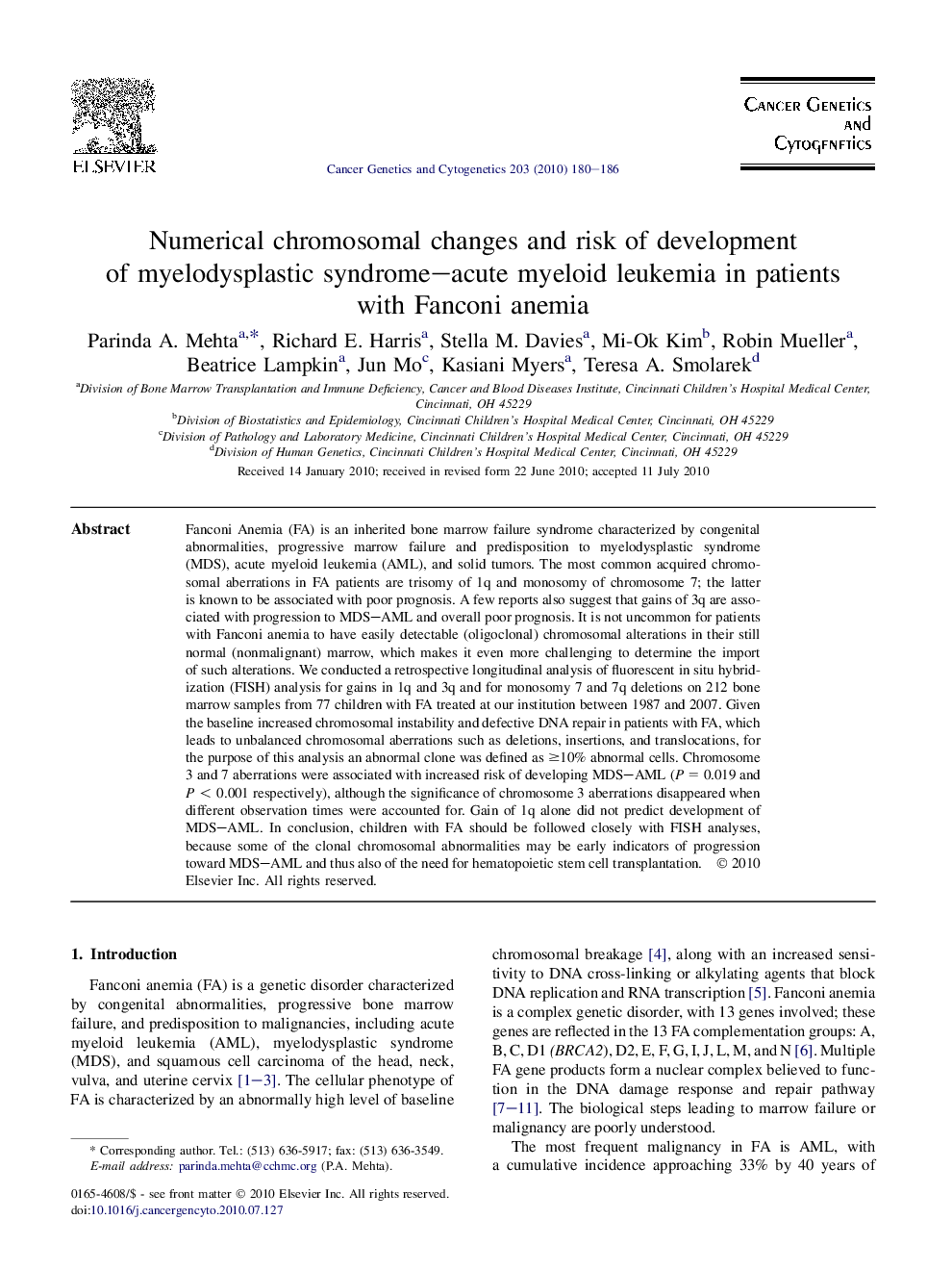| کد مقاله | کد نشریه | سال انتشار | مقاله انگلیسی | نسخه تمام متن |
|---|---|---|---|---|
| 2110554 | 1546574 | 2010 | 7 صفحه PDF | دانلود رایگان |

Fanconi Anemia (FA) is an inherited bone marrow failure syndrome characterized by congenital abnormalities, progressive marrow failure and predisposition to myelodysplastic syndrome (MDS), acute myeloid leukemia (AML), and solid tumors. The most common acquired chromosomal aberrations in FA patients are trisomy of 1q and monosomy of chromosome 7; the latter is known to be associated with poor prognosis. A few reports also suggest that gains of 3q are associated with progression to MDS–AML and overall poor prognosis. It is not uncommon for patients with Fanconi anemia to have easily detectable (oligoclonal) chromosomal alterations in their still normal (nonmalignant) marrow, which makes it even more challenging to determine the import of such alterations. We conducted a retrospective longitudinal analysis of fluorescent in situ hybridization (FISH) analysis for gains in 1q and 3q and for monosomy 7 and 7q deletions on 212 bone marrow samples from 77 children with FA treated at our institution between 1987 and 2007. Given the baseline increased chromosomal instability and defective DNA repair in patients with FA, which leads to unbalanced chromosomal aberrations such as deletions, insertions, and translocations, for the purpose of this analysis an abnormal clone was defined as ≥10% abnormal cells. Chromosome 3 and 7 aberrations were associated with increased risk of developing MDS–AML (P = 0.019 and P < 0.001 respectively), although the significance of chromosome 3 aberrations disappeared when different observation times were accounted for. Gain of 1q alone did not predict development of MDS–AML. In conclusion, children with FA should be followed closely with FISH analyses, because some of the clonal chromosomal abnormalities may be early indicators of progression toward MDS–AML and thus also of the need for hematopoietic stem cell transplantation.
Journal: Cancer Genetics and Cytogenetics - Volume 203, Issue 2, December 2010, Pages 180–186